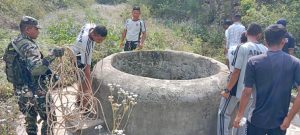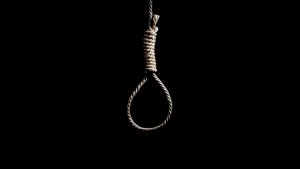In the last fiscal year 2020/21, Nepal Police recorded 7,141 suicide cases. Of them, 3,938 of the suicide victims were men, 2,449 women, and the remaining children.
The data of Nepal Police alone show the number of suicides has increased by 14.2 per cent from the previous fiscal year 2019/20 despite efforts for suicide prevention from both governmental and non-governmental sectors.
As one of the significant parts of the suicide prevention strategies, several helplines are in operation in Nepal with an aim of providing empathetic support and anonymous advice to individuals having suicidal thoughts.
While these helplines have benefitted many callers by deterring suicidal thoughts in them and asking them to seek medical support, their ideal effectiveness is still in doubt due to a lack of a proper integrated system and strategies for suicide prevention, which requires multi-sectoral roles, view helpline operators, mental health experts, and other stakeholders.
Focus on empathetic support, but not enough follow-ups

According to Dr Rabi Shakya, the chief of the Department of Psychiatry, Patan Academy of Health Sciences, around three calls come to the hospital’s helpline in a day on an average asking for support.
The Patan Hospital has been operating the 24-hour suicide prevention helpline since 2016 as a part of its suicide prevention strategy.
While reviewing the data of phone calls received from the suicidal individuals of the last six months, the number of male callers is higher than that of women, Shakya informs. Most of them are young people.
There is a team of eight doctors at the hospital to handle such calls. Yet, there is no such system as follow-ups.
“We assume that the caller has halted their decision of killing themselves once they hang up the phone, though we don’t know their decision,” Shakya says, “Our main goal is to provide therapy-based counselling and convince them to seek medical help and visit the hospital.”
“Unfortunately, we don’t conduct the follow-ups for any caller. Neither do we have any rescue team. If some caller comes to visit us for medical support, we suppose that the helpline has been effective,” informs Shakya.
An official at the Department of Psychiatry and Mental Health at Tribhuvan University Teaching Hospital shares the primary objective of the suicide prevention helpline there, officially started a year ago, is to provide emotional ventilation along with maintaining the confidentiality and stressing on their problem-solving techniques.
Likewise, Parbati Shrestha, a project coordinator at the Transcultural Psychosocial Organisation Nepal (TPO Nepal), a suicide prevention NGO, says, on average, her organisation receives about eight calls per day. There are three psychologists working full-time who are responsible to counsel the callers. They listen to their problems, ask their expectations, and build trust that everything the caller is sharing will be kept confidential so that they can open up more comfortably.
“The psychologist tries to know if their problems are related to any mental health issues or if they have taken any medical support to cope with that problem. Based on the conversation, psychologists analyse if the caller requires regular support or not and conduct follow-ups of such callers and provide regular support. If necessary, we link them to psychiatrists as well.”
Assessing efficacy

According to Shrestha, many individuals having suicidal thoughts hesitate to seek support from health facilities and share their issues with their family and friends due to the social stigma relating to mental health problems and suicide. Therefore, suicide prevention helplines that maintain the confidentiality of the callers can be effective.
Psychologist Kripa Sigdel says brief interventions have been effective in reducing suicidal thoughts in callers globally. In the countries like Nepal where there is a social stigma surrounding suicide, this works quite better, she argues.
However, the question lies about the supervision of the helplines. Sigdel doubts if there has been any monitoring about the effectiveness of the helplines if they are conducting follow-ups and if they have supported the callers with coping techniques and a lot more.
“It is very significant to think and work on the next steps after the calls. For example, after ending the calls, the concerned stakeholders should think about how and where to send them for counselling or how to provide regular support to them,” she views.
Accordingly, in some cases that require physical intervention, Shrestha of the TPO says her organisation immediately alerts the police while keeping the callers engaged and rescuing them on time. Of 616 calls the suicide prevention helpline number 1166 operated jointly by the Mental Hospital and the TPO, about 137 people have come to seek support from psychologists, she informs.
Likewise, in about 120 calls received by the suicide prevention helpline operated by the TUTH and handled by a team of three psychologists and nine psychiatric doctors all around the clock, around 38 of cent of calls are from inside the Kathmandu valley.
Of them, five callers have visited the TUTH for medical support, informs the TUTH official.
Meanwhile, stating that the awareness of mental health issues including suicide prevention and helplines is much city-centric, psychologist Sigdel suggests the country needs to improve the effectiveness of existing helplines instead of adding numbers.
Then, it will be easier to keep the data and conduct checks and balances. Also, this topic should always be brought into discourses, Sigdel advises.
Meanwhile, Shrestha and Shakya stress the need for a multi-sectoral role to combat this major health concern. Shrestha explains, “Many people do not still realise or acknowledge suicide as a mental health issue for which a person can seek medical support, in the presence of social stigma and absence of awareness. In order to fight such stigma and prevent suicides, all the sectors are media, NGOs, the government, academic institutions, pesticides distributor, and other stakeholders should work actively and in integration.”
Government efforts

To improve the effectiveness of such helplines, the government has endorsed the National Mental Health Strategy and Action Plan that has included suicide prevention as one of its prime components.
“We have been working according to this plan only. At the same time, we acknowledge and support the efforts carried out by non-governmental sectors in suicide prevention and mental health issues,” shares Dr Phanindra Prasad Baral, the chief of the mental health section at the Epidemiology and Disease Control Division under the Ministry of Health.
According to Basanta Kunwar, a former spokesperson of the Nepal Police, police personnel have also been rescuing people who have attempted to kill themselves after getting informed by various people and groups including the service helpline operators as well.
In case you need help:
- Patan Hospital Helpline for Suicide Prevention: 9813476123
- TUTH Suicide Hotline: 9840021600
- Government Suicide Prevention Helpline: 1166
From the archive
























